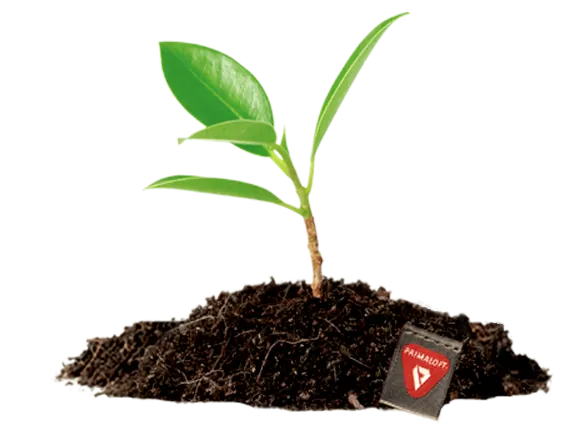The Best Deals on Camping, Backpacking and Outdoor Gear [June 2025]
Greenwashing. It’s a term many of us have heard thrown around these days. But what is greenwashing? What does it mean? And is it bad? Let’s break it down.
What is greenwashing?
Short answer: it’s when any company uses marketing materials and jargon to claim to be environmentally friendly or make an eco-friendly or sustainable product without actually being a sustainable company.
Example: Think of green-colored packaging or labels, which send the message that products are earth-friendly, or unregulated terms like “natural” or “green” on items that may or may not actually be better for the planet. Like a reusable water bottle that touts on the box how many single-use bottles you’ll save by purchasing their product, but that is made of cheap, petroleum-based plastic, isn’t well-made so it won’t last, and manufactured by a company that has no sustainability practices in place. That’s greenwashing.
Long answer: it’s complicated.
Because while most eco-warriors (Terradrift included), like to encourage everyone everywhere to be as environmentally friendly as possible across all aspects of their lives (eat vegan, use a low-flow shower head, stop using single-use plastic, remember your reusable grocery bags, choose environmentally friendly fabrics…you get the idea), none of us are perfect. And the truth is, sustainability is a spectrum and not all sustainable endeavors are available to all people. That’s why you’ll hear environmentalists like us occasionally proclaim that climate justice is social justice: You can’t have the former without the latter.
That said, it’s my opinion, and a lot of people may want to fight me on this, that until the most sustainable practices are universally available and affordable to all (vegan food, sustainable clothing, zero-waste products, etc.), sustainability is often an expensive choice that involves sacrifice. And not everyone has the option to make that choice. So every individual has to decide for themselves what steps they are physically or economically able to realistically make. And that’s what makes sustainability a spectrum.

Is greenwashing bad?
So if that’s the case, is greenwashing good or bad?
Over all, it’s not generally regarded as a positive thing. Claiming that a product is “green” when nothing about the manufacturing process actually is is no bueno. That’s false advertising, friends, and it’s not something that should be rewarded with your shopping dollars. It’s like packaged food being labeled as “Natural:” it isn’t a regulated term and means virtually nothing.
That said, not all greenwashing is inherently evil. Consider that water bottle example from above. Yeah, a quality, reusable bottle like the 50% recycled RECON from HydraPak or a fun stainless steel bottle from United By Blue may be the best, most sustainable option, but a cheap $3 bottle from Amazon or Walmart still beats using single-use plastic bottles every day.
Likewise, consider a shirt from an inexpensive clothing brand like H&M. The brand is not widely renowned for being sustainable. In fact, the brand is essentially “fast fashion,” meant to be worn and discarded, probably made in factories with less than ideal conditions and shipped all over the world in non-sustainable packaging. However, they may have a line of shirts labeled “green” that are made out of organic cotton. And if you read our post about the sustainability of organic cotton, you know it’s much better for the environment than conventional cotton.
Does that make the shirt as sustainable as an organic cotton shirt from a brand like Toad&Co or United By Blue who are super sustainable companies from the bottom up? Absolutely not. BUT! While someone like me might be able to swing $30 for an organic cotton T-shirt from a reputable, sustainable brand a few times a year, a family of four or six who lives from paycheck to paycheck and constantly needs to replace children’s clothing may not. So that organic cotton shirt, which probably costs closer to $10 or $15 at H&M, may be that family’s best, most affordable option if they’re trying to make more sustainable purchases but have to choose between feeding their family and buying sustainable clothing.
Or consider necessities like toilet paper. For a large family on a tight budget, every cent matters when it comes to buying the things they need on a regular basis. For some people, paying $3 more for toilet paper or paper towels made out of renewable bamboo may not seem like a big deal. But for a thrifty family, that $3 could pay for the whole family’s dinner that night. And when it comes to feeding their kids or spending more on sustainable paper products, guess what most parents are going to choose? But if they can buy paper towels from major brands that are at least made out of recycled fibers for just pennies more, now they have a slightly more sustainable option.
Because here’s the thing. Right now, right here, in the time we’re living in, sustainability is NOT affordable. Organic materials, foods, and zero-waste products aren’t cheap (compare zero-waste toothpaste tabs priced at $14 for a 1-2 month supply for two people to a Whole Foods brand tube that probably lasts the same two people 3-4 months and costs 1/5 the price). And cheap products, materials and foods aren’t sustainable. And brands like Osprey and Rackle and BioLite that are doing all they can to protect our planet from a business standpoint and create products that do less harm to our environment simply aren’t accessible to everyone.
Yet.
I hope that one day soon (through grants or subsidies or widespread acceptance), prices of quality, sustainable products and gear will drop and be so affordable and ubiquitous that everyone will have access to it and brands won’t be able to label their products as something their not, but until then, it’s about doing our research and doing our individual best, which means doing everything we are each capable of doing to reduce our impact on the place we call home. Even if that means buying a cheap reusable water bottle instead of a long-lasting sustainable one from a high-quality brand.

The Bottom Line
As with nearly every multi-faceted argument, greenwashing isn’t a cut-and-dried issue with an easy solution. Do brands and companies use it to their benefit? Yes. Should they be allowed to if their products don’t meet certain standards? Absolutely not. That’s called lying, not advertising. But products labeled as “green” or “eco-friendly” are occasionally still better options than others on the shelf or the rack, and for those who can’t afford to pay the high price of the most sustainable products and gear, it’s at least better than nothing.
That doesn’t give you an excuse to throw down and give up on advocating for sustainability. Here are some tips for making the most sustainable purchases.
- Do some brand research: Check brands’ websites for sustainability info to see if they do anything besides offer products made of trendy recycled plastic bottles or organic cotton. Find out if they’re carbon neutral or offset production costs or utilize plastic-free shipping or plant 20 trees for every product they sell.
- Purchase items made of better materials: If you’re in the market for a reusable water bottle, sure, any bottle will do and will reduce single-use plastic (as long as you actually use it), but not all water bottle materials are created equal. Take into consideration what it’s made of and how long it will last. Then opt for products that offer usability and longevity (and maybe a lifetime warranty).
- Buy less: If those hemp shoes or organic cotton jacket seem too expensive, instead of buying several cheap ones in a row, save up a little at a time and buy one quality item instead. It may not offer the instant gratification of an impulse buy, but the planet will be better for it and you’ll likely be more appreciative of the quality items you had to save up for.
- Buy used: If quality sustainable clothing and gear just isn’t in your budget, buy used (read our post on used gear)! Online gear shops like the REI Used site, GearTrade, even Craigslist and Ebay as well as local thrift stores offer great, highly discounted items that are automatically more sustainable because you’re keeping it out of a landfill AND preventing new materials from being manufactured and shipped.
- Travel sustainably: Greenwashing exists in the travel industry, too (check out our Q&A with Authenteco Travel). Be wary of hotels, tours, and excursions that tout sustainability but don’t do more than say they won’t wash your towels every day (they always wash your towels every day…).
- Vote with your dollars: as often as you can, vote with your dollars. Every purchase you make is a message sent that you support a company or brand for what they’re doing and encourage them to keep it up. Vote wisely, and together, we could make the world a more sustainable place.
Sustainability is about doing as much as you can as often as you can. Now get out there and wander on.
•
This post contains affiliate links, which means if you make a purchase after clicky-clicking on a link, we may receive a percentage of the sale. That means you get dope new sustainable stuff and we get to keep creating awesome content. Win-win.
